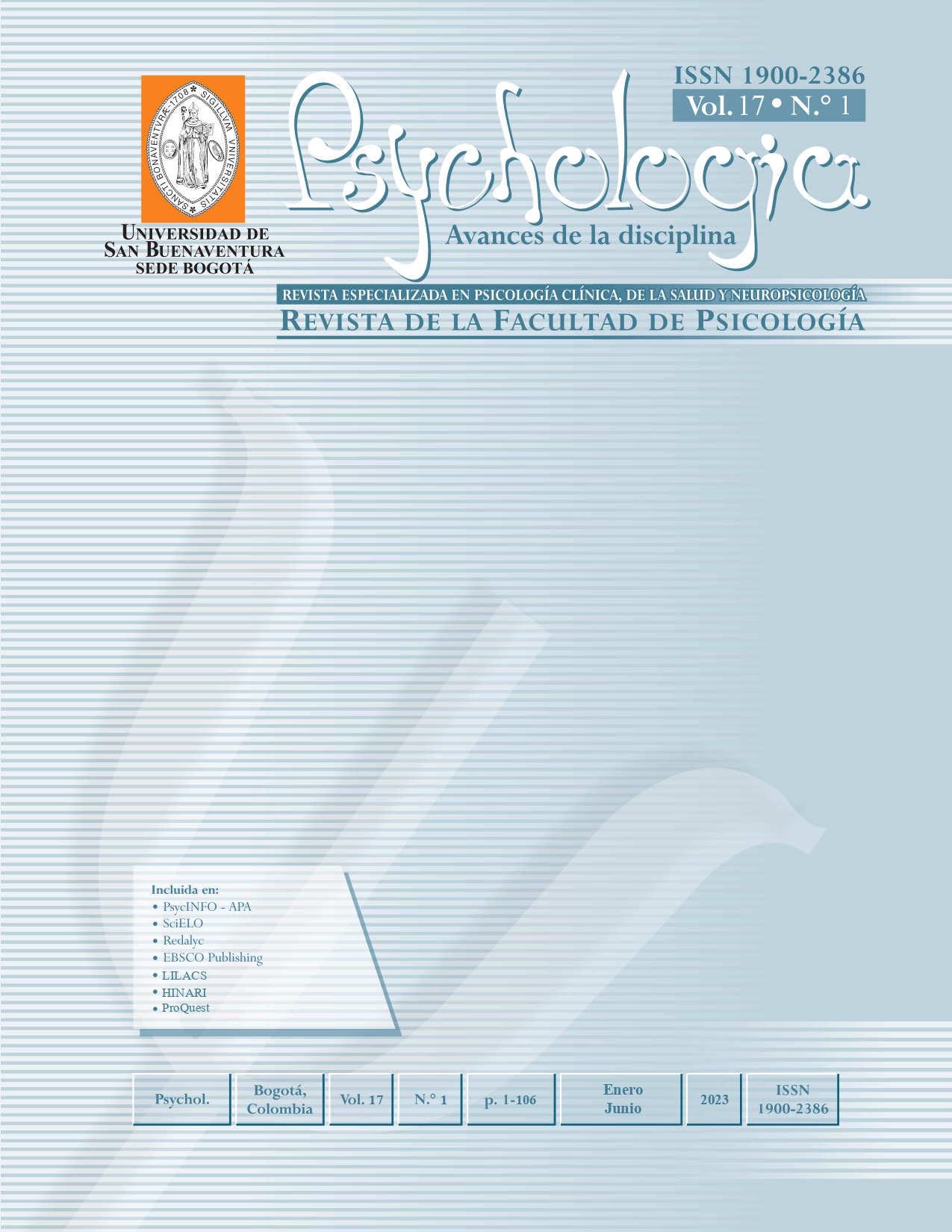This journal provides open, immediate access to its contents, based on the principle that offering the public free access to research helps to promote a higher global exchange of knowledge.
As such, all journal articles are published under a Creative Commons Attribution-NonCommercial-ShareAlike 4.0 International License (CC BY-NC-SA), by which commercial use of the original work or its possible derived works is not allowed, and the distribution thereof must be done with the same license elements regulating the original work.
http://creativecommons.org/licenses/by-nc-sa/4.0/
Abstract
This article presents in exemplified form two measures of skewness. Although they may be useful when the distribution is unimodal, they are not reported in psychological research. One is Pearson’s standardized distance from the mean to the mode. The other is the Bickel’s robust measure of skewness. It is shown how to compute the point and interval estimate with the R program. Moreover, interval confidences at 90%, 95% and 99% are calculated with 10 000 draws with replacement from normally distributed samples-population with different sizes to have interpretative guidelines for symmetry. It is concluded that the ∓0.1 rule does not apply with these measures, Grenander’s mode provides the most efficient confidence intervals, but Bickel’s skewness is the option with ordinal variables.
References
Bono, R., Arnau, J., Alarcón, R. & Blanca, M. J. (2020). Bias, precision, and accuracy of skewness and kurtosis estimators for frequently used continuous distributions. Symmetry, 12(1), article 19, 1-17. https://doi.org/10.3390/sym12010019.
Canty, A. & Ripley, B. (2022). Boot: bootstrap R (S-Plus) functions. R package version 1.3-28. https://cran.r-project.org/web/packages/boot/boot.pdf.
Eberl, A. & Klar, B. (2020). Asymptotic distributions and performance of empirical skewness measures. Computational Statistics & Data Analysis, 146, article 106939. https://doi.org/10.1016/j.csda.2020.106939.
Epanechnikov, V. A. (1969). Non-parametric estimation of a multivariate probability density. Theory of Probability and Its Applications, 14(1), 153-158. https://doi.org/10.1137/1114019.
Freedman, D. & Diaconis, P. (1981). On the histogram as a density estimator: L2 theory. Zeitschrift für Wahrscheinlichkeitstheorie und Verwandte Gebiete, 57(4), 453-476. https://doi.org/10.1007/BF01025868.
Giorgi, F. M., Ceraolo, C. & Mercatelli, D. (2022). The R language: an engine for bio-informatics and data science. Life, 12(5), article 648. https://doi.org/10.3390/life12050648.
Grenander, U. (1965). Some direct estimates of the mode. Annals of Mathematical Statistics, 36(1), 131-138. https://doi.org/10.1214/aoms/1177700277.
Guidoum, A. C. (2020). Kernel estimator and bandwidth selection for density and its derivatives: the kedd package. arxiv, article 2012.06102v1. https://doi.org/10.48550/arXiv.2012.06102.
Gupta, S. C. & Kapoor, V. K. (2020). Descriptive measures. In Fundamentals of mathematical statistics, twelfth edition (section 2, pp. 1-78). New Delhi: Sultan Chand & Sons.
Henderson, D. J., Papadopoulos, A. & Parmeter, C. F. (2023). Bandwidth selection for kernel density estimation of fat-tailed and skewed distributions. Journal of Statistical Computation and Simulation, article 2173194, 1-26. https://doi.org/10.1080/00949655.2023.2173194
Khan, A. A., Cheema, S. A., Hussain, Z. & Abdel-Salam, G. A. (2021). Measuring skewness: We do not assume much. Scientia Iranica, 28(6), 3525-3537. https://doi.org/10.24200/SCI.2020.52306.2649.
Lane, D. M. (2015). Histograms. En Online statistics education: a multimedia course of study. https://stats.libretexts.org/Bookshelves/Introductory_Statistics/Book%3A_Introductory_Statistics_(Lane)/02%3A_Graphing_Distributions/2.04%3A_Histograms.
Mokhtar, S. F., Yusof, Z. M. & Sapiri, H. (2023). Confidence intervals by bootstrapping approach: a significance review. Malaysian Journal of Fundamental and Applied Sciences, 19(1), 30-42. https://doi.org/10.11113/mjfas.v19n1.2660.
Moral, J. (2022). Una medida de asimetría unidimensional para variables cualitativas. Revista de Psicología (PUCP), 40(1), 519-551. https://dx.doi.org/10.18800/psico.202201.017.
Moral, J. (2023). Standardized distance from the mean to the median as a measure of skewness. Open Journal of Statistics, 13, 359-378. https://dx.doi.org/10.4236/ojs.2023.133018.
Pakgohar, A. & Mehrannia, H. (2023). Statistical rules in scientific reports (the basics). Iranian Journal of Diabetes and Obesity, 15, article 12205. https://doi.org/10.18502/ijdo.v15i1.12205.
Parzen, E. (1962). On estimation of a probability density function and mode. Annals of Mathematical Statistics, 33(3), 1065-1076. https://doi.org/10.1214/aoms/1177704472.
Pearson, K. (1894). Contributions to the mathematical theory of evolution. I. On the dissection of asymmetrical frequency curves. Philosophical Transactions of the Royal Society of London A, 185, 71-110. https://doi.org/10.1098/rsta.1894.0003.
Poncet, P. (2022). Package ‘modeest’. Mode estimation. https://cran.r-project.org/web/packages/modeest/modeest.pdf.
Ruzankin, P. S. (2022). A class of nonparametric mode estimators. Communications in Statistics - Simulation and Computation, 51(6), 3291-3304. https://doi.org/10.1080/03610918.2019.1711410.
Sarka, D. (2021). Descriptive statistics. In: Advanced Analytics with Transact-SQL (pp. 3-29). Berkeley, CA: Apress. https://doi.org/10.1007/978-1-4842-7173-5_1.
Scott, D. W. (1979). On optimal and data-based histograms. Biometrika, 66(3), 605-610. https://doi.org/10.1093/biomet/66.3.605.
Sheather, S. J. & Jones, M. C. (1991). A reliable data-based bandwidth selection method for kernel density estimation. Journal of the Royal Statistical Society. Series B (Methodological), 53(3), 683-690. https://doi.org/10.1111/j.2517-6161.1991.tb01857.x.
Shi, J., Luo, D., Wan, X., Liu, Y., Liu, J., Bian, Z. & Tong, T. (2020). Detecting the skewness of data from the sample size and the five-number summary. arXiv, article 2010.05749. https://doi.org/10.48550/arXiv.2010.05749.
Silverman, B. W. (1986). Density estimation for statistics and data analysis. London: Chapman and Hall.

 Perfil Google Scholar
Perfil Google Scholar




















